Ditapis dengan
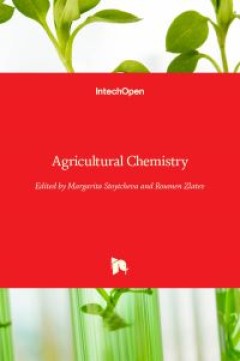
Agricultural Chemistry
The present book is a collection of ten original research articles and reports, associated with selected topics in agricultural chemistry. The discussed issues are organized in four sections: Classification and labeling of active substances in plant protection products, Environmental and stress plant physiology and behavior, Antimicrobial and antioxidant potential of plant extracts, and Polluta…
- Edisi
- -
- ISBN/ISSN
- 978-953-51-5031-2
- Deskripsi Fisik
- 224 hlm.
- Judul Seri
- -
- No. Panggil
- -

The Social Metabolism of Spanish Agriculture, 1900–2008: The Mediterranean …
This open access book provides a panoramic view of the evolution of Spanish agriculture from 1900 to the present, offering a more diverse picture to the complex and multidimensional reality of agrarian production. With a clear transdisciplinary ambition, the book applies an original and innovative theoretical and methodological tool, termed Agrarian Social Metabolism, combining Social Metabolis…
- Edisi
- -
- ISBN/ISSN
- 978-3-030-20900-1
- Deskripsi Fisik
- 296 hlm.
- Judul Seri
- Environmental History Volume 10
- No. Panggil
- -

Understanding the Value of and Reasoning Behind Farmer Adoption of Carbon Cen…
Understanding how to promote farmers’ use of carbon (C) centric practices known to increase soil C sequestration is needed to design information systems and orient policy, investment and environmental markets. Farmers undertake individual and collective actions using techniques that have varied over time and space according to land potential, farming systems, values and, evolving political an…
- Edisi
- -
- ISBN/ISSN
- 978-1-7867-969-5
- Deskripsi Fisik
- 23 hlm.
- Judul Seri
- -
- No. Panggil
- -
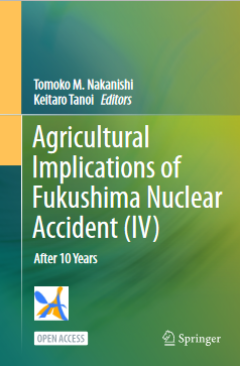
Agricultural Implications of Fukushima Nuclear Accident (IV): After 10 Years
This book presents the findings from on-site research into radioactive cesium contamination in various agricultural systems affected by the Fukushima Daiichi Nuclear Power Plant accident in March 2011. This fourth volume in the series reports on studies undertaken at contaminated sites such as farmland and forests, focusing on soil, water, mountain, agricultural products, and animals. It also p…
- Edisi
- -
- ISBN/ISSN
- 978-981-19-9361-9
- Deskripsi Fisik
- 281 hlm.
- Judul Seri
- -
- No. Panggil
- -

Management of Organic Soils to Reduce Soil Organic Carbon Losses
Organic soils of intact peatlands store 1/4 of the global soil organic carbon (SOC). Despite being an important source of methane (CH4), they are climate coolers because they continuously accumulate new organic carbon. However, when these organic soils are drained for agriculture, the resulting aerobic conditions lead to fast decomposition of the peat and the release of carbon dioxide (CO2) and…
- Edisi
- -
- ISBN/ISSN
- 978-1-80146-324-9
- Deskripsi Fisik
- 65 hlm.
- Judul Seri
- -
- No. Panggil
- -

Benefits and Trade-offs of Soil Organic Carbon Sequestration
Soil organic carbon sequestration has received increasing attention due to the important benefits it can have for ecosystem services and in particular food production, climate change mitigation and adaptation. Indeed, soils rich in organic carbon are, in general, more fertile and support plant growth better than carbon-depleted soils. On the other hand, management practices applied to increase …
- Edisi
- -
- ISBN/ISSN
- 978-1-8014-6697-4
- Deskripsi Fisik
- 27 hlm.
- Judul Seri
- -
- No. Panggil
- -
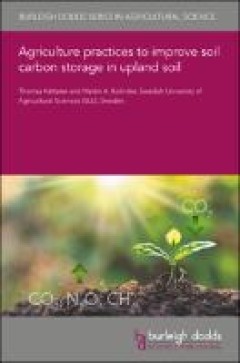
Agriculture Practices to Improve Soil Carbon Storage in Upland Soil
Increasing carbon storage in soils is one way of mitigating climate change. Carbon sequestration in agricultural soils through improved management is particularly interesting, because of low costs and technical readiness. In this chapter, we synthesize current knowledge on the impact of management practices that promote carbon accumulation in upland mineral soils. Following a brief overview of …
- Edisi
- -
- ISBN/ISSN
- 978-1-80146-311-9
- Deskripsi Fisik
- 37 hlm.
- Judul Seri
- -
- No. Panggil
- -

Altering Crop Management Practices to Promote Pollinators
Agricultural intensification, or the increase in crop production per unit of input or land area to meet the needs of a growing population, has resulted in a landscape dominated by large scale monoculture cropping. Pollinators, specifically, are impacted by the lack of diverse floral and habitat resources associated with this type of farming. Agriculture must develop practices that diversify the…
- Edisi
- -
- ISBN/ISSN
- 978-1-80146-098-9
- Deskripsi Fisik
- 23 hlm.
- Judul Seri
- -
- No. Panggil
- -
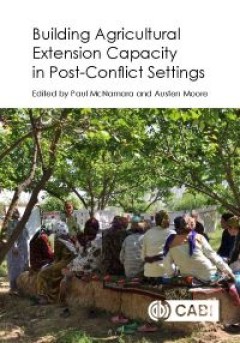
Building Agricultural Extension Capacity in Post-Conflict Settings
This book investigates the experiences and issues involved with extension systems in post-conflict settings; evaluates the impact of different extension policy approaches and practice in such settings; and identifies the key elements needed to effectively rebuild agricultural extension systems and programs in post-conflict contexts. The chapters contain country-specific case studies that provid…
- Edisi
- -
- ISBN/ISSN
- 978-1-78639-060-8
- Deskripsi Fisik
- 270 hlm.
- Judul Seri
- -
- No. Panggil
- -
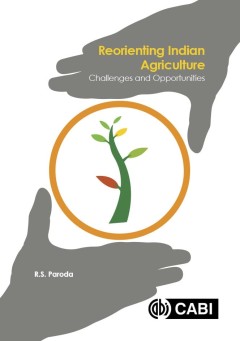
Reorienting Indian Agriculture: Challenges and Opportunities
Buku ini mencakup berbagai aspek pertanian India. Terdiri dari 32 bab yang disajikan dalam 12 bagian dengan judul sebagai berikut: skenario pertanian; revolusi di bidang pertanian; reorientasi penelitian pertanian untuk inovasi; meningkatkan produktivitas dan produksi; memanfaatkan bioteknologi pertanian; mengelola sumber daya genetik tanaman; peran dan pertumbuhan sektor perbenihan; pengelolaa…
- Edisi
- -
- ISBN/ISSN
- 978-1-78639-519-1
- Deskripsi Fisik
- 336 hlm.
- Judul Seri
- -
- No. Panggil
- -
 Karya Umum
Karya Umum  Filsafat
Filsafat  Agama
Agama  Ilmu-ilmu Sosial
Ilmu-ilmu Sosial  Bahasa
Bahasa  Ilmu-ilmu Murni
Ilmu-ilmu Murni  Ilmu-ilmu Terapan
Ilmu-ilmu Terapan  Kesenian, Hiburan, dan Olahraga
Kesenian, Hiburan, dan Olahraga  Kesusastraan
Kesusastraan  Geografi dan Sejarah
Geografi dan Sejarah